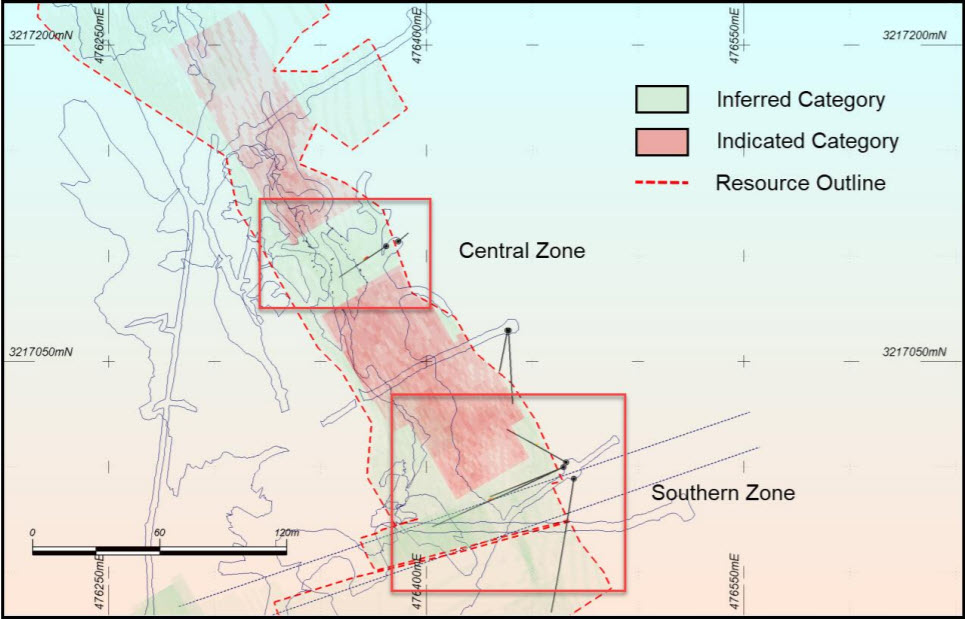- Drilling intersected high-grade mineralised intervals in the Level 7 Semi-oxide orebody (SOX) as part of the Inferred to Indicated category conversion.
- Drilling intersected significant downhole results up to 5.1m @ 14.2% Zn, 5.39%Pb, 48.68g/t Ag and 3.5m @ 22.54% Zn, 7.46%Pb, 35.64g/t Ag.
- Drilling encountered some faulting within the main zone but also demonstrated that thicker units of high-grade mineralisation occur within the current resource model at Level 7 which is the deepest of the main ore workings currently developed at Plomosas.
- Several high grade results from channel sampling includes 2.2m @ 43.02% Zn, 13.5% Pb, 83.25g/t Ag and 1.8m @ 36.61% Zn, 20.41% Pb, 139.22g/t Ag
Consolidated Zinc Limited (CZL:ASX) is pleased to present the following update detailing drilling and assay results received at the Plomosas Project as part of the resource upgrade drilling programme.
RESOURCE DRILLING
Underground drilling aimed at converting Inferred category Mineral Resources within the Semi-Oxidised mineralisation (SOX) to Indicated Category completed eight holes for 435 metres in Cuddies L7.1 and L8.2. This latest drilling of the existing JORC (2012) Mineral Resource defined in 2018 tested the inferred mineralisation in the central zone and targeted extensions to inferred resource material to the south of the SOX (Refer Figure 1).
Massive sulphide mineralisation was visually identified in holes with thicker units observed in holes LV7065 and LV8023. Highlights of the downhole results from these holes are shown below;
| LV7065 | 3.30m at | 24.80% Zn, | 8.31% Pb, | 68.78g/t Ag |
| LV8023 | 5.10m at | 14.20% Zn, | 5.39% Pb, | 48.68g/t Ag |
| LV8025 | 3.50m at | 22.54% Zn | 7.46% Pb | 35.64g/t Ag |
Table 1 summarises the results encountered in drill holes reported and details the assays results. Table 2 provides additional details of the drilling and results.
Styles of mineralisation intersected in the drilling show the presence of massive to semi-massive sulphides occurring at the hanging wall contact to the Cuesta shales and the Mina Vieja marble unit (hole LV8023). Drill holes targeting mineralisation at 20 metres down dip to these sulphide units, intersected units of thinning mineralisation, confirming that although mineralisation thins towards the 055O azimuth direction (hole LV8024), mineralisation pitches and plunges towards the southeast, as noted by the thicker unit of sulphide intersected in hole LV8023.
A major dextral strike-slip fault to the south of the Level 7 ore zone, has displaced mineralisation by tens of metres to the southwest, which has complicated drill targeting from Cuddy 8.2. Future drilling will define the fault displacements.
Significantly, the drilling to date continues to demonstrate that thicker units of high-grade mineralisation occur within the current resource model at Level 7 which is the deepest of the main ore workings developed at Plomosas at approximately 240m below surface.
Table 1: Results for all holes drilled for the program.
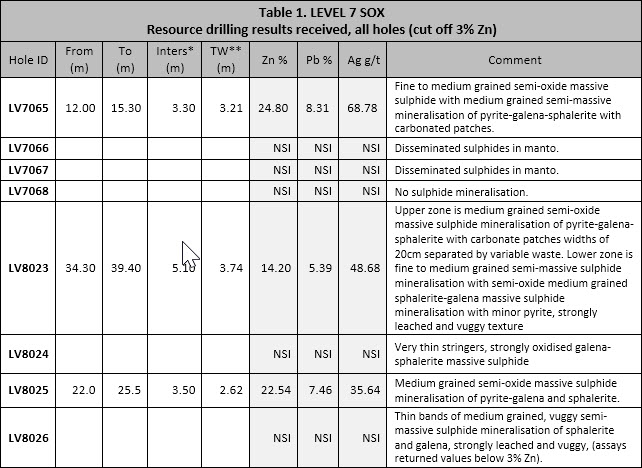
**TW is True Width and represents the best estimate of the intercept based on the geological interpretation of the sequence. NSI is No Significant Intersection
CHANNEL SAMPLING
As part of the resource upgrade, a sampling program targeting ore exposed in existing levels was completed as it would provide a more representative profile and be cheaper and faster than drilling. The program was planned to target the down dip ore projected between levels 910, 900 and 907 with the intention of converting the current Inferred Category to Indicated Category in an area of 35 x 32 meters located in the central zone of the SOX orebody. Mapping the lithology was conducted to identify the ore locations in each level and to select the left or right wall for sampling.
40 channels were taken perpendicular to bedding at a 2 to 3 metre spacing, including ore and waste with sample lengths between 1.5 to 0.5 meters for a total of 97 samples. This gives true width values across the sampled faces of mineralisation.
Sampling these levels showed that ore zones were robust and up to three metres in thickness. In some instance the ore zones exhibit strong to isoclinal folding that effectively thickens the ore zone. Channel sampling had targeted massive sulphide mineralisation in each of these levels and hole LV8023 had intersected ca. 5.1 metres of ore downdip from level 907. Mineralisation then continues below the mineralised interval intersected in LV8023.
Some significant assays results (true width) are shown below, with the total results for all samples in Table 2.
| Sample LV913006: 2.2m @ 43.02% Zn, 13.5% Pb, 83.25g/t Ag |
| Sample LV913012: 1.8m @ 36.61% Zn, 20.41% Pb, 139.22g/t Ag |
| Sample LV907006: 1.9m @ 36.44% Zn, 19.36% Pb, 80.41g/t Ag |
| Sample LV907005: 1.9m @ 35.18% Zn, 19.94% Pb, 79.9g/t Ag |
| Sample LV907009: 1.8m @ 34.07% Zn, 27.96% Pb, 79.96g/t Ag |
| Sample LV907010: 1.0m @ 32.68% Zn, 23.47% Pb, 99g/t Ag |
| Sample LV913008: 2.5m @ 31.92% Zn, 23.68% Pb, 92.11g/t Ag |
The main zones targeted by drilling and channel sampling are shown in Figure 1, which illustrates the areas of Inferred that were drilled and sampled to convert to Indicated Category. Results from this drilling and channel sampling have converted sections of the Inferred Category resources to Indicated Category totalling 26,000 tonnes at 22.6% Zn, 12.8% Pb and 72.5g/t Ag.
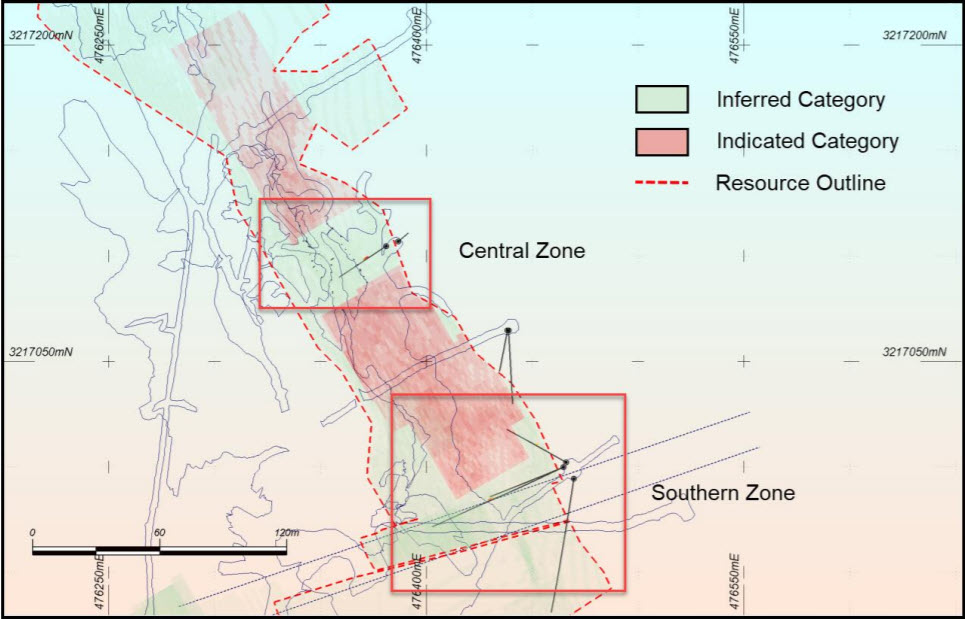
The channel sampling and drilling completed to date, clearly demonstrates the presence of robust mineralisation in the inferred zones and continuous downdip which adds confidence to the extension of ore zones in these areas.
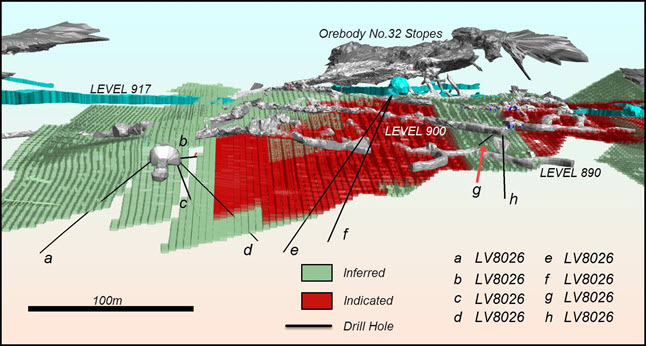
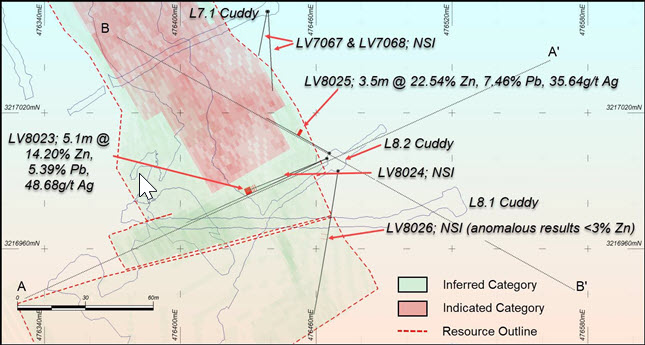
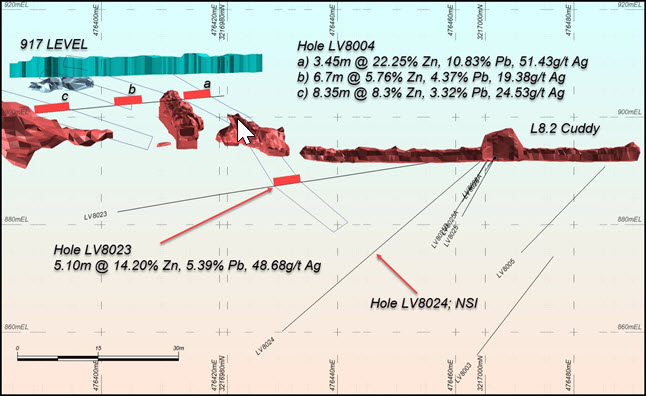
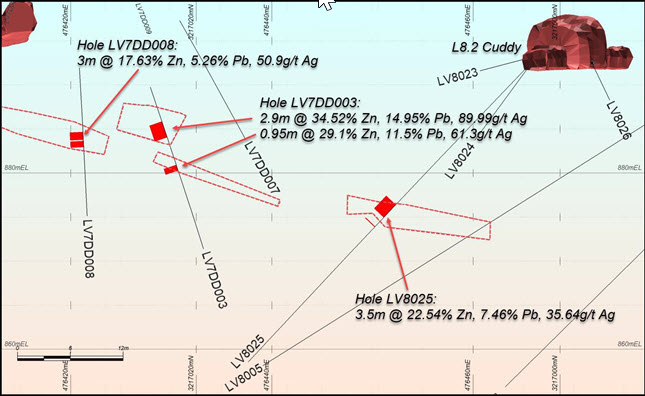
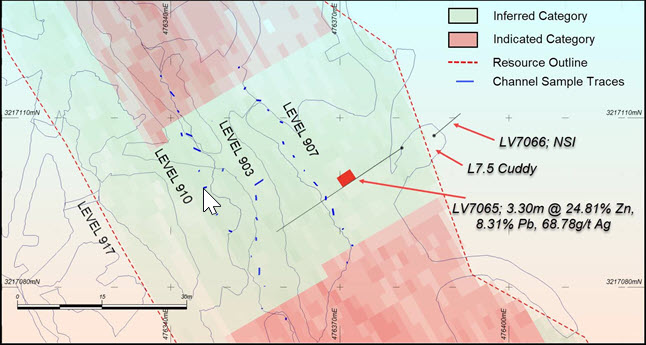
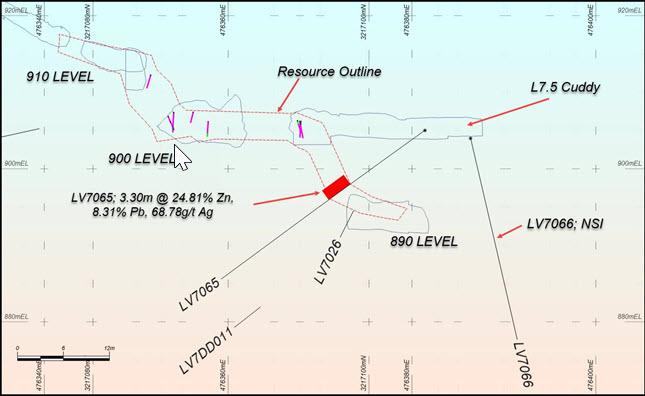
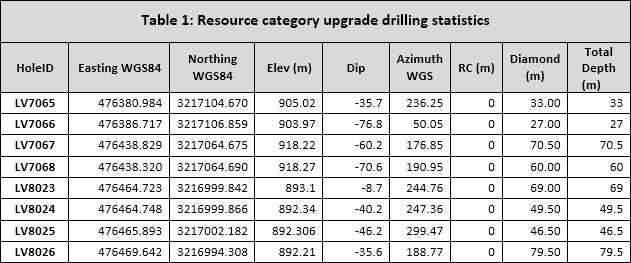
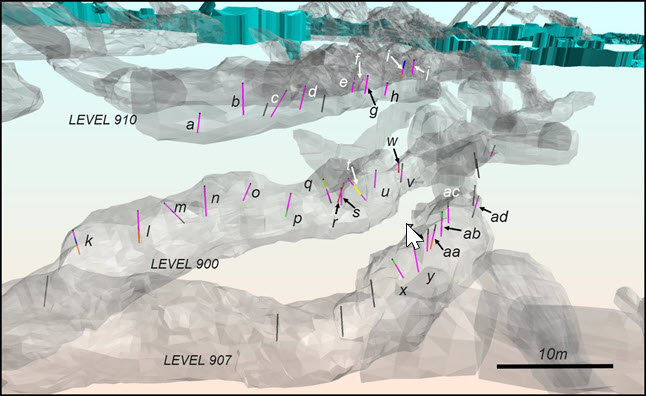
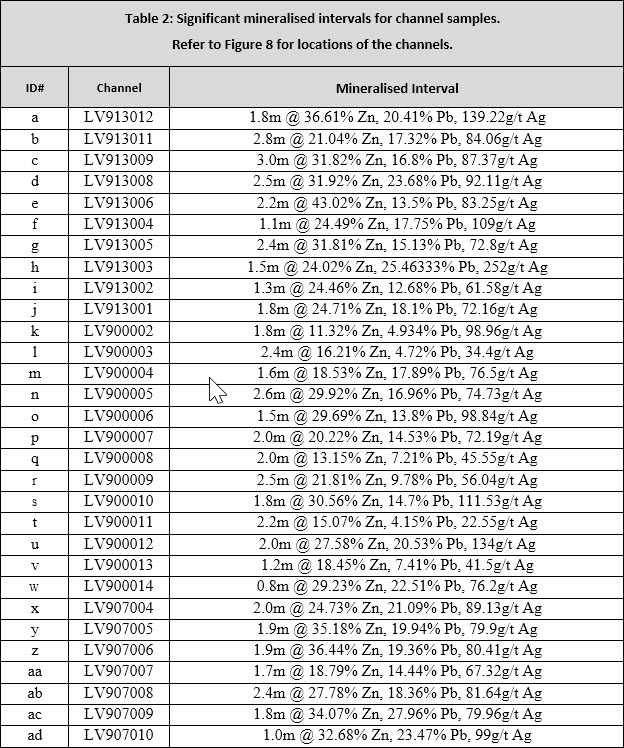
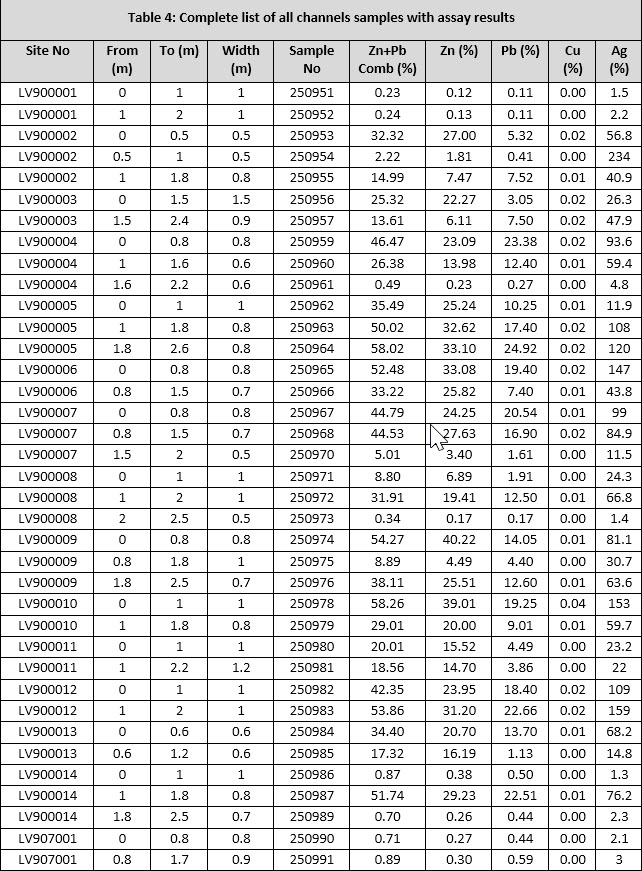
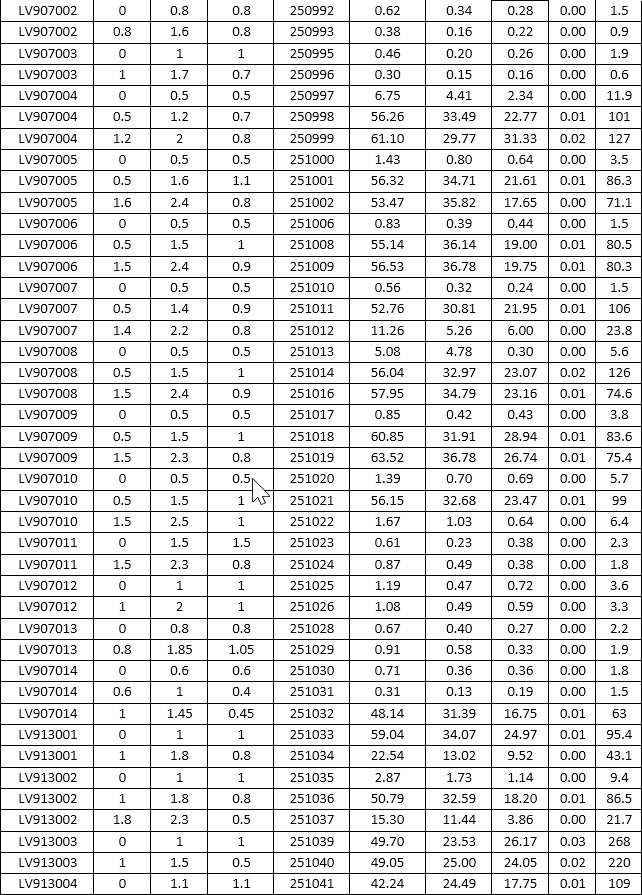
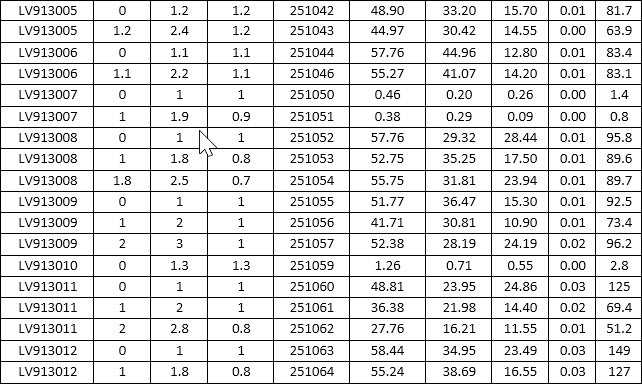
The Managing Director of CZL Brad Marwood advised “These results have allowed for the reclassification of
over 26,000t of very high-grade mineralisation from Inferred to Indicated category Mineral Resources.
Further the drilling has provided better definition of the main fault offset in the Level 7 SOX orebody. The down dip extension of the identified mineralisation provides for near term targets to be followed up with future drilling.”
This announcement was authorised for issue to the ASX by the Directors of the Company. For further information please contact:
Brad Marwood
Managing Director
08 9322 3406
ABOUT CONSOLIDATED ZINC
Consolidated Zinc Limited (ASX: CZL) owns 100% of the historic Plomosas Mine, located 120km from Chihuahua City, Chihuahua State, Mexico. Chihuahua State has a strong mining sector with other large base and precious metal projects in operation within the state. Historical mining at Plomosas between 1945 and 1974 extracted over 2 million tonnes of ore grading 22% Zn+Pb and over 80g/t Ag. Only small-scale mining continued to the present day and the mineralised zones remain open at depth and along strike.
The company has commenced mining at Plomosas and is committed to exploit the potential of the high-grade Zinc, Lead and Silver Mineral Resource through the identification, exploration and exploitation of new zones of mineralisation within and adjacent to the known mineralisation with a view to identify new mineral resources that are exploitable.
Competent Persons’ Statement
The information in this report that relates to exploration results, data collection and geological interpretation is based on information compiled by Steve Boda BSc (Hons), MAIG, MGSA, MSEG. Mr. Boda is a Member of the Australian Institute of Geoscientists (AIG). Mr. Boda has sufficient experience that is relevant to the style of mineralisation and type of deposit under consideration and to the activity that is being undertaken to qualify as Competent Person as defined in the 2012 edition of the ‘Australasian Code for Reporting of Exploration Results, Minerals Resources and Ore Reserves’ (JORC Code). Mr. Boda consents to the inclusion in the report of the matters based on their information in the form and context in which it appears.
Original Article: https://www.consolidatedzinc.com.au/wp-content/uploads/2020/04/2020423-Resource-Drilling-Update-Base-Metals-ASX-LODGEMENT-FINAL.pdf
